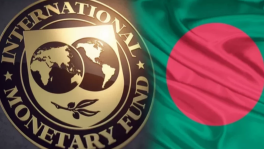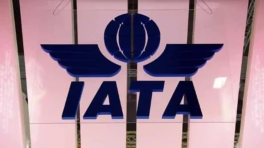The Liberation of Jashore: The day Muktibahini breached an impregnable fort
The liberation of Jashore is an inspiring and consequential event in Bangladesh's history which eventually allowed the Indo-Bangla allied forces to march on to Dhaka and end the bloody war in a glorious victory

A grand and proud sculpture stands tall at the city centre of Jashore, on the Khairtala Mor (popularly called Vashkorjer Mor), reminding everyone of the glory of Bangladesh Liberation War of 1971, in which Jashore became the first district to be liberated on December 6, 1971, and with Jashore, the invading Pakistani forces lost control of almost all of Southern Bangladesh.
The liberation of Jashore is an inspiring and consequential event in Bangladesh's history which eventually allowed the Indo-Bangla allied forces to march on to Dhaka and end the bloody war in a glorious victory.
But to truly appreciate this monumental feat, we have to go back to 1970, when Pakistan was burning and sinking at the same time! A decade-long military rule had left Pakistan in ruins and nationwide protests, along with catastrophic floods in East Pakistan, pushed the country towards the brink. Moreover, the military junta refused to accept the results of 1970 general elections, even after General Yahya Khan had promised to hand over power to the elected representatives.
His abrupt decision to suspend the National Assembly Session indefinitely on March 1st convinced Bengalis of East Pakistan that the central authority of Pakistan won't ever give them their democratic rights and widespread protests followed.
Jashore was no exception. The people held processions and took a solemn oath to liberate their country outside the District Collectorate office. Deployed army forces tried to disperse the crowd and eventually started to shoot unarmed protestors, and Charubala Kaur became the first martyr from Jashore to die for her country in the Liberation war.
Situated on the southwestern tip of East Pakistan and sharing a land boundary with neighbouring India, Jashore was an important strategic location for the Pakistani forces. Therefore, the Jashore Cantonment was turned into an impregnable fort. Pakistan Armed Force's 3rd Ind. Armoured Squadron and 107th brigade led by Brigadier Hayat Khan was tasked to keep six adjoining districts along with Jashore under military control.
The Army cracked down on 25th March midnight to terrify people of Jahsore into submission and started indiscriminate killings. They killed prominent MP Mashiur Rahman and many political leaders, along with countless other unarmed citizens.
Bengali officers of Jashore cantonment led by Captain Hafiz revolted on 30th March and with the help of local EPR, they set the political prisoners free. Yet, highly sophisticated weaponries like artilleries, tanks and armoured vehicles of Pakistani forces proved to be too big a hurdle, as the freedom fighters were forced to retreat after days of fighting. Lieutenant Anwar and many others heroically sacrificed their lives in battle on 4th March.
Bhairab, the calm river going through the heart of Jashore, turned red in the ensuing days as the Pakistani army's rampage continued, killing countless innocent men, women and children.
The freedom fighters reorganised behind the border and the Bangladesh government-in-exile assigned the task to liberate Jashore to Sector 8 commander of the Muktibahini (Freedom Fighters) Major Abu Osman Chowdhury (later to be replaced by Major MA Manzoor).

The freedom fighters engaged in guerrilla warfare until the cold weather of November allowed the combined Bangladeshi-Indian forces to cross the border with heavy artillery and tanks. Suspecting possible allied activities, the Pakistani occupation forces attacked Jagannathpur in Chaugaccha, a sub-district of Jashore, on 21st November and butchered more than 30 innocent villagers on the holy day of Eid-ul-Fitr.
The Allied forces under Lt Gen. Raina moved to liberate Jashore and were faced with intense resistance from the Pakistanis. The battle of Jagannathpur continued till 22th November and without the protection of bunkers, casualties mounted. At the end, both sides came so close to each other that a fist-fight ensued. Eventually, Pakistani 6th, 12th and 21st Punjab Regiments had to retreat back to the safety of the cantonment.
The allied side was manned by two Indian Sikh light artillery regiments along with a 1,000 Bengali freedom fighters. Some sources say the Pakistanis lost close to a hundred soldiers while the Muktibahini lost 57, while a few other sources put the combined civilian-military casualty figure at a much higher level. The Pakistani Army also lost eight tanks and had to leave behind a significant amount of arms (American and Chinese made) because of their sudden retreat.
In the next days, the downing of a few sabre jets of Pakistani Air Force by the allied forces further broke Pakistani morale and when on 4th December, the freedom fighters moved towards Jashore City, Pakistani Brigadier Hayat Khan ordered all his forces outside the city to move towards Khulna. The southern stronghold was coming apart and the Muktibahini could see victory in sight.
On 5th December, Pakistani Army units clashed heavily with Indian infantry and mounted divisions. The Muktibahini's relentless attacks in Rajarhat and other areas of the city convinced the Pakistanis that the 'impregnable fort of Jashore' had been breached. As the occupation forces including Pakistani 107th infantry brigade (in charge of the cantonment itself) started to retreat quickly towards Khulna, Indian General Barat led the allied forces to take control of Jashore Cantonment.
The next day, sector commander MA Manzoor and Indian 9th division commander Dalbir Singh entered the city and found that all Pakistani forces in and around Jashore had fled. With the liberation of Jashore, six adjoining districts and almost the entire southwestern region stood secure in the hands of the freedom fighters.
People all around the city began to pour and rejoice as the news of liberation began to spread. For them, the dream came true and a free and sovereign Bangladesh seemed to be finally within reach.
In the ensuing days, Jashore was visited by prominent leaders. Erstwhile Prime Minister Tajuddin Ahmed urged the public to keep peace on 11th December in a massive public gathering as the allied forces marched on Dhaka.
Eventually, General Niazi, head of Pakistani military's Eastern Command, surrendered unconditionally on 16th December to the Allied Forces and the entire nation finally breathed air of a free country.
It's been 49 years since the day Jashore became liberated. It took enormous sacrifices and determination to liberate the first district, which helped the freedom fighters to see the light at the end of the tunnel. Today, massive processions, victory rallies and proud descendants of a heroic generation rightly commemorate this day.
But we need to remember; only by building a more prosperous and fairer Bangladesh can we really pay respect to our heroes of 1971.


 Keep updated, follow The Business Standard's Google news channel
Keep updated, follow The Business Standard's Google news channel














